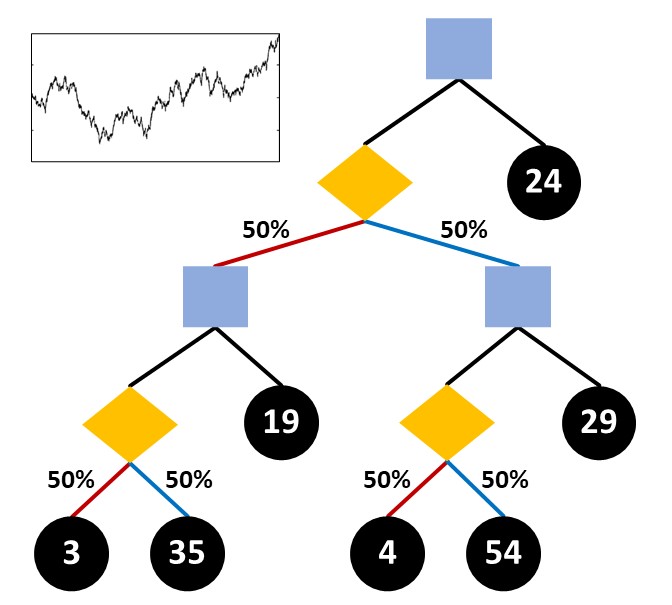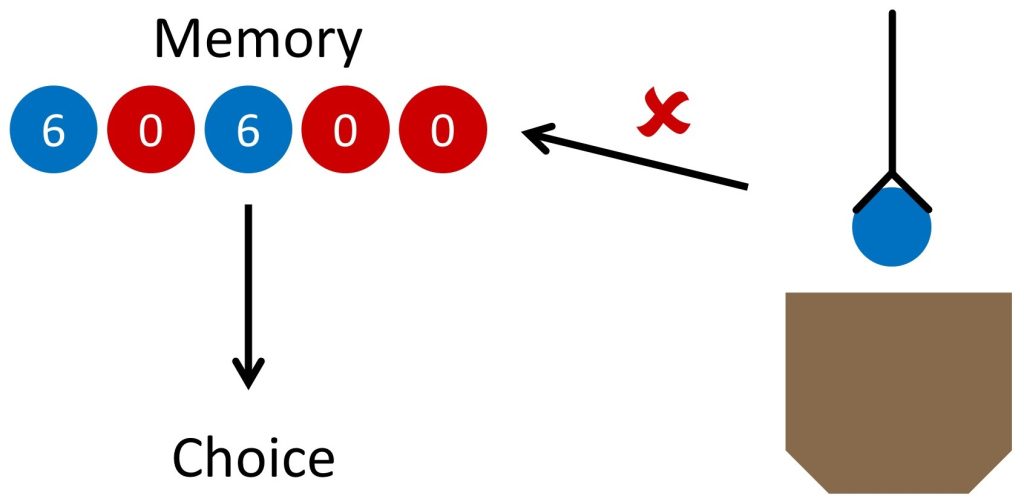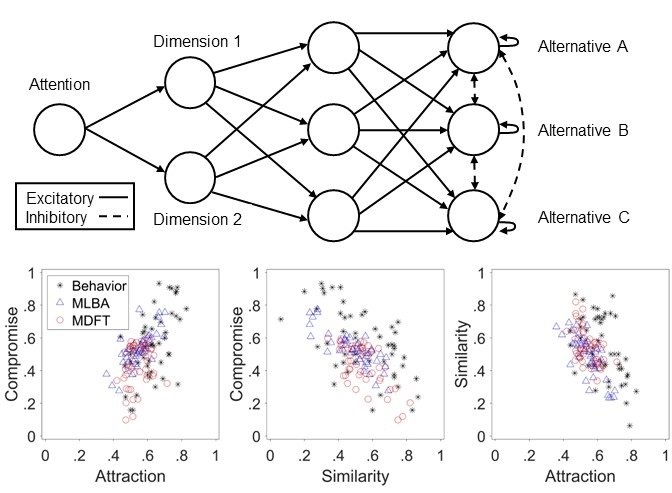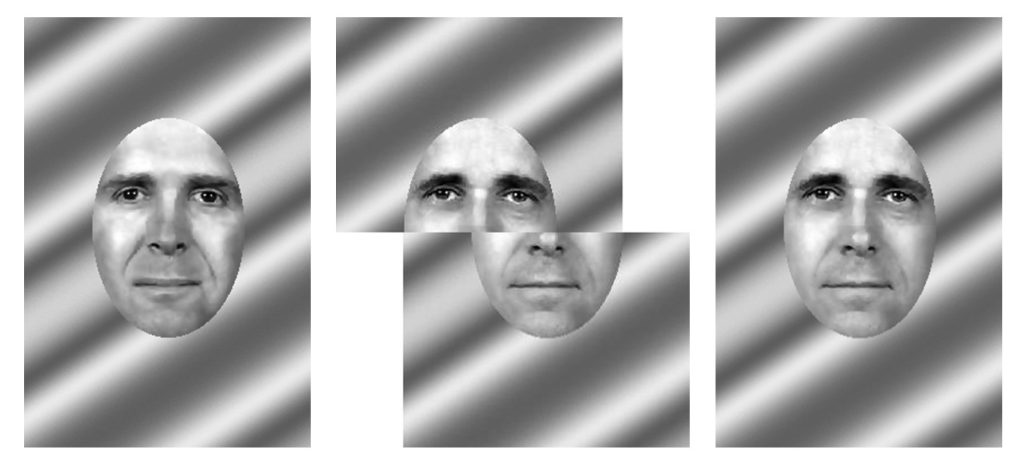Dynamic Decision Making

Although most research into risky decision making has focused on simple scenarios –where isolated choices are made independent of one another –many important decisions in life play out across sequences of interdependent events and actions. For example, a student planning for a future career must consider which university to attend, which classes to take, which internships to pursue, and which job opportunities these might eventually lead to. Despite the ubiquity and importance of such decision problems, we know relatively little about how people manage the complexities of dynamic, multistage decisions. Our research seeks to understand what factors influence the amount and quality of planning that people engage in when solving complex decision problems. We also build models to test theories of dynamic decision making, with an emphasis on the role of mental simulation in choice.
Representative Publications
- Hotaling, J. M. (2020). Decision field theory-planning: A model of planning on the fly in multistage decision making. Decision, 7(1), 20-42. PDF
- Hotaling, J. M., Kellen, D. (2022). Dynamic decision making: Empirical and theoretical directions. In K. D. Federmeier (Ed.), Psychology of Learning and Motivation: Advances in Research and Theory, Volume 76 (pp. 207-238). Academic Press. PDF
Experience-Based Decisions

Many decisions require that individuals learn about their alternatives through observation. Whether it is choosing a restaurant, a laundry detergent, or a political candidate, past experiences guide behavior. In our research, we investigate the psychological processes underlying experience-based decisions. We are especially interested in understanding how attention, learning, and memory interact to support, and sometimes disrupt, decisions from experience. We build computational models to formally test various hypotheses about how people represent choice alternatives and their outcomes. Many of these draw inspiration from models of exemplar memory, and aim to explain decision phenomena using cognitive mechanisms such as memory confusion and interference.
Representative Publications
- Hotaling, J. M., Donkin, C., Jarvstad, A., & Newell, B. R. (2022). MEM-EX: An exemplar memory model of decisions from experience. Cognitive Psychology, 138, 101517. PDF
- Hotaling, J. M., Jarvstad, A., Donkin, C., & Newell, B. R. (2019). How to change the weight of rare events in decisions from experience. Psychological Science, 30(12), 1767-1779. PDF
- Hotaling, J. M., Navarro, D. J., & Newell, B. R. (2021). Skilled bandits: Learning to choose in a reactive world. Journal of Experimental Psychology: Learning, Memory, & Cognition, 47 (6), 879-905. PDF
Multialternative Context Effects

How people choose between multiple options is a topic of interest across many disciplines, including psychology, neuroscience, economics, and marketing. Most standard economic choice theories assume that the value of an option is solely a function of the option’s attributes. However, many studies have shown that the likelihood of choosing a particular option also depends on how it relates to other alternatives. We study the factors that give rise to such context effects across various choice domains. Much of this work involves computational modeling to understand how information processing strategies give rise to context effects when comparing options to each other.
Representative Publications
- Hotaling, J. M. & Rieskamp, J. (2019). A quantitative test of computational models of multialternative context effects. Decision, 6(3), 201-222. PDF
- Spektor, M. S., Kellen, D., & Hotaling, J. M., (2018). When the good looks bad: An experimental exploration of the repulsion effect. Psychological Science, 29(8), 1309-1320. PDF
- Gluth, S., Hotaling, J. M., & Rieskamp, J. (2017). The attraction effect modulates reward prediction errors and intertemporal choices. Journal of Neuroscience, 37(2), 371-382. PDF
Automatic vs. Controlled Processing

In cognitive science there is an apparent paradox: On the one hand, studies of judgment and decision making have repeatedly shown that people systematically violate normative standards. On the other hand, optimal models, often Bayesian in formulation, have been successful in accounting for behavior in fields such as categorization, memory, and perception. To reconcile these divergent patterns, we explore the differential influences of automatic vs. controlled processes across various choice scenarios. For example, we find that when information is automatically combined using overlearned perceptual mechanisms, integration can be near-optimal, whereas when more deliberate processes are employed, traditional judgment errors arise.We also examine how bottom-up (stimulus-driven) processes produce attentional biases –e.g. to selectively sample extreme outcomes –, and what task features and cognitive properties allow for top-down (goal-driven) control or inhibition.
Representative Publications
- Vanunu, Y., Hotaling, J. M., Le Pelley, M. E., & Newell, B. R. (2021). How top-down and bottom-up attention modulate risky choice. Proceedings of the National Academy of Sciences, 118(39). PDF
- Hotaling, J. M., Cohen, A. L., Busemeyer, J. R., & Shiffrin, R. M. (2015). The dilution effect and information integration in perceptual decision making. PLoS ONE, 10(9), e0138481. PDF
- Vanunu, Y., Hotaling, J. M., & Newell, B. R. (2020). Elucidating the differential impact of extreme-outcomes in perceptual and preferential choice. Cognitive Psychology, 119. PDF
